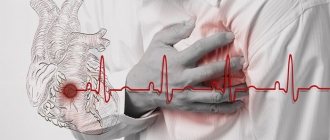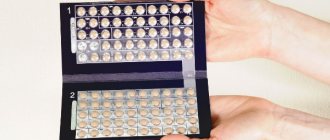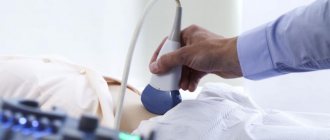Normally, the uterus has the shape of an inverted pear. If there is a deflection at the bottom of the genital organ, and the uterus forms a saddle shape, then this type of anatomical change is called a saddle uterus. In gynecology, the saddle uterus is a pathological phenomenon. An “unusual” shape can cause problems during gestation and childbirth.
Shape of the uterus: norm and pathology
The uterus looks like a pear, with its extended side turned up. The upper part of the uterus is called the fundus, and the lower part or isthmus ends with the cervix, through which the uterine cavity communicates with the vagina (it is in this way that sperm, as well as all pathogenic microflora, penetrate the uterus).
The main female organ is 7–8 cm long, 4–5 cm wide, and the uterus weighs about 50–60 grams. From the corners of the uterus (above) tubes (fallopian) extend to the sides, which look like tassels at the ends (fimbriae). Thanks to the flickering of the fimbriae, the egg released from the ovary enters the fallopian tube, where fertilization occurs.
Anomalies of uterine development are numerous and can be either an independent pathology or combined with malformations of the cervix and/or vagina. So, they distinguish a two-horned uterus, a one-horned uterus, a double uterus and others. The saddle-shaped uterus is one of the many variants of the bicornuate uterus. In turn, the bicornuate uterus (according to Adamyan) is divided into 3 types:
- saddle-shaped (there is an expansion of the uterus in a transverse section, and in the fundus there is a slight depression, which resembles a saddle; the splitting of the uterus into 2 horns is practically not expressed, that is, the uterine horns merge without involving the fundus);
- incomplete (there is a division of the uterus into 2 horns only in its upper third, but the sizes and shapes of the horns are identical);
- complete (the division of the uterus into 2 horns begins immediately, at the level of the sacrouterine folds, in this case both horns branch in opposite directions at an angle).
Typically, the pear-shaped uterus in humans is designed by nature and is intended for bearing (with the exception, of course, of multiple pregnancies) only one child. But the structure of the uterus, for example, in a cat or dog, has a bicornuate shape, which can be felt during pregnancy of the animal from the sides of the abdomen (the fruits are located like in a pea pod).
Classification of pathology
The bicornuate uterus can be of three types:
- incomplete
- full
- saddle
Saddle-shaped is a shape of an organ in which there is an expansion in the cross section, and at the bottom there is a depression, which is shaped like a saddle. The two horns of the organ are not very pronounced; they merge, without capturing the bottom of the organ.
The normal shape of the uterus (without pathologies) is designed by nature. It is ideal for carrying a fetus for 9 months. It is worth knowing that some animals, including dogs, have a bicornuate uterus.
Causes and mechanism of development of the saddle uterus
What contributes to the formation of a saddle-shaped uterus, that is, the reasons for the development of this defect have not yet been precisely established. With confidence, doctors only state the mechanism of development of such an anomaly of the uterus. It is known that at 10–14 weeks of embryogenesis, the formation of the described organ begins. This occurs due to the fusion of the paramesonephric ducts. As a result, two utero-vaginal cavities are formed, the separation of which is caused by the sagittal septum (that is, there is a right and left cavity).
During intrauterine development, or rather, towards its end, this septum dissolves, and the formed uterus becomes single-cavity. That is, the initially formed bicornuate uterus with an obstruction inside acquires a saddle-shaped shape by the end of intrauterine development, and by the time the girl is born it becomes pear-shaped. But if harmful factors influence the process of embryogenesis, then incomplete fusion of the paramesonephric ducts occurs, which causes various types of uterine and/or vaginal defects. Such unfavorable factors include:
- intoxication of a woman during pregnancy (use of drugs, alcohol, smoking, certain medications or occupational hazards);
- lack of vitamins during pregnancy;
- stress;
- endocrine pathology (thyroid disease, diabetes mellitus);
- heart defects (associated heart failure leads to chronic intrauterine fetal hypoxia);
- infectious diseases (rubella, toxoplasmosis, cytomegalovirus, herpes, influenza and others);
- chronic fetal hypoxia due to various obstetric pathologies.
How to suspect the presence of a saddle uterus?
If you look for some clinical manifestations of this uterine anomaly, then searching for them will take considerable time, at least until the woman thinks about pregnancy or becomes pregnant. Why? It's simple, there are no specific signs of a saddle uterus.
It can occur in a completely healthy woman in all respects, who does not even suspect that she has such a defect. Moreover, it is simply impossible to palpate the saddle uterus during a gynecological examination (doctors’ hands do not have x-ray abilities). And even during an ultrasound examination of the pelvic organs, this defect is not always detected (with the exception, perhaps, of an ultrasound examination of a pregnant patient).
Treatment
The saddle shape does not require specific treatment if the anomaly is not accompanied by painful symptoms. If there is pain during menstruation or discomfort during sexual intercourse, a woman may be prescribed painkillers or antispasmodics.
If an anomaly is diagnosed in a woman during pregnancy, then treatment should be aimed at preserving the baby. It is impossible to influence the location of the fetus or placenta with drugs, so the only method of treating the anomaly is surgery. Surgical intervention is indicated in cases where a woman’s chances of bearing a baby are sharply reduced (due to the abnormal structure of the organ).
The operation may be prescribed for women who cannot become pregnant. It has been proven that after surgical treatment, women’s chances of bearing and giving birth to a healthy child increase almost 10 times.
Surgical treatment is carried out in 2 ways:
- hysteroscopy;
- laparoscopy.
The choice of treatment method depends on the degree of prolapse of the uterine fundus.
Surgical treatment involves excision (incision) of the uterine cavity followed by suturing. The purpose of the operation is to create an anatomically correct shape.
The operation is indicated only if it is reliably proven (by diagnostic examination) that it is the abnormal structure of the reproductive organ that is the root cause of the impossibility of bearing a child or the impossibility of conception.
There is a risk of premature birth. This is explained by the deformed structure of the fruit receptacle. If a pregnant woman develops certain complications during pregnancy (fetal hypoxia, vaginal bleeding), then her doctor should prescribe treatment.
The treatment regimen is selected individually. This depends on the degree of deformation of the organ, as well as on the physiological state of the woman. Drugs for expectant mothers are selected very carefully. The duration of pregnancy and the presence of concomitant pathologies must be taken into account.
To prevent premature birth and the risk of complications, the following medications may be prescribed:
- hormonal (Utrozhestan);
- antispasmodics;
- tocolytics;
- medications that normalize blood flow (Actovegin).
Pregnancy and saddle uterus
But the saddle uterus during pregnancy, as a rule, will make itself felt.
- Firstly, a slightly altered shape of the fruit receptacle can provoke a threat, and often permanent, of interruption.
- Incorrect placentation (low placenta or placenta previa) is also much more common. Since the uterus has an uncharacteristic shape, both the threat of miscarriage and incorrect placentation are caused by the attachment of a fertilized egg in a place that is not very convenient for it. As the gestational age increases, malposition and presentation of the fetus may occur (transverse or breech presentation). Again, as a result of improper attachment of the placenta, the risk of its premature detachment increases, and hence bleeding.
- The likelihood of premature birth in women with a saddle-shaped uterus is also higher than in pregnant women with a normal shape of the fetal sac.
- During childbirth, the process of transmission of nerve impulses during contractions is disrupted, which leads to various anomalies of labor forces (either weakness of labor or incoordination). Therefore, more often such births end in abdominal delivery, that is, cesarean section.
- Both in the afterbirth and postpartum periods there is a high risk of bleeding, which is caused by a violation of the contractile activity of the uterus.
But the described complications do not always occur; in half of the cases, pregnancy in women with a saddle uterus proceeds well.
Features of childbirth
In cases of mild pathology, pregnancy usually proceeds without complications. In this case, independent natural childbirth is allowed.
If the saddle shape of the uterus is more pronounced and problems with pregnancy arose during gestation, most likely they will appear during childbirth. More often, against this background, partial or complete placenta previa is diagnosed, which poses a danger to the life of the mother and child.
It is fraught with early placental abruption, uterine bleeding, oxygen starvation of the fetus and a high risk of complications during childbirth. Natural delivery in this situation is considered dangerous and, if complications develop, doctors perform a cesarean section.
Throughout pregnancy, a woman with a saddle-shaped uterus should be observed by a doctor, without missing the necessary examinations. Such precautions will help prevent health problems in the unborn baby and minimize the likelihood of complications during childbirth.
As mentioned above, natural childbirth with severe deformation of the reproductive organ is excluded, since it can be fatal for both the mother and the fetus. Some women refuse a cesarean section, wanting to give birth on their own. But by challenging the doctors’ decision, such patients risk not only their health and life, but also the safety of the unborn child.
Author: Olga Rogozhkina, doctor, especially for Mama66.ru
Problems conceiving?
Many women are interested in the question: “If I have a saddle uterus, does that mean I won’t be able to conceive a child and how can I get pregnant?” I would like to immediately answer that this malformation does not always lead to infertility, and for many women pregnancy occurs without problems. Difficulties with conception arise only in those women who have a significantly saddle-shaped uterus due to impaired attachment of the fertilized egg. In the case of an existing intrauterine septum (except for the saddle uterus), pregnancy, if it occurs, ends in spontaneous abortion in 90% of situations.
If a woman has a slightly saddle uterus, but she still cannot get pregnant, then other causes of infertility should be looked for. It should be remembered that this uterine anomaly is often combined with other defects of the urogenital system. In addition, not everyone has a normal hormonal balance in the body or does not have chronic extragenital diseases (see inflammation of the appendages, obstruction of the fallopian tubes, uterus for conception).
Poses for conception with an irregularly shaped uterus
As for the optimal position for conception with a saddle uterus, as a doctor, I will say right away that there are no suitable or unsuitable positions for getting pregnant. Currently, forums are very common on the Internet where positions during sex that are most favorable for a particular gynecological pathology are actively discussed. Girls, don't flatter yourself!
Sexual intercourse and the pleasure associated with it are aimed at making a woman pregnant, no matter in what position it occurs (even on the head) - this is how nature intends it. Male sperm have pronounced activity and mobility, do not lose viability for a long time, and therefore the chances of getting pregnant in a healthy woman are much higher than the chances of getting pregnant.
If a woman cannot conceive a child, even adhering to the recommended position, she should look for the problem either in herself (and it will not necessarily consist of a pathology that she herself is guilty of) or in a man (it is possible that he has a small percentage of active and living sperm in ejaculate, see spermogram transcript).
The saddle uterus does not play any role in the penetration of the “live ones” into its cavity and then into the fallopian tubes, where they will meet the egg to fertilize it. The question is, will the fertilized egg be able to attach to the lining of the uterus and in the right place? Therefore, I repeat, the position during coitus does not play any role.
General information
A saddle uterus is not the most common anomaly. According to statistics, only 1% of women are diagnosed with this form of pathology.
The location of the uterus is the middle part of the small pelvis. The bladder, cervix, rectum, vagina and appendages are also located here. Normally, the uterus has the shape of an inverted pear, the average length reaches 4-7 cm, the thickness of the uterus is approximately 5 cm, and its width is about 4 cm.
Thanks to the elastic smooth muscle walls, the uterus can significantly increase in size. This process occurs during pregnancy, and only in the gradually “expanding” uterus does the fetus develop normally. It is the uterus that “starts” the process of delivery when it begins to “push” the fetus out.
The saddle uterus is a subspecies of the bicornuate uterus. The peculiarity of its structure is at the bottom of the cleavage organ in the shape of a saddle or heart. There are differences between the bicornuate and saddle uterus. In the first case, a partition with a vertical depression is formed at the bottom.
It is almost impossible to determine the anomaly before pregnancy. Clinical signs do not appear with a saddle uterus. Pathology can only be detected using ultrasound.
Diagnostics
Additional examination methods help diagnose a saddle uterus:
- Ultrasound of the uterus and appendages
Ultrasound examination does not always help to detect the described anomaly. If the deformation is significantly pronounced, then a transverse scan reveals an increase in the width of the uterine fundus to 68 mm, the myometrium is up to 10–14 mm thick and it is noted that it bulges into the uterine cavity. The optimal way to identify a saddle uterus is to perform an ultrasound with a vaginal probe, preferably in the second half of the cycle, when the endometrium is of significant thickness.
- Hysterosalpingography or hysterography
These are x-ray examination methods, during which an x-ray contrast agent is injected into the uterus, and then pictures are taken. A sign of saddle shape is the presence of a saddle-shaped depression that protrudes into the uterine cavity.
- Magnetic resonance imaging
The method consists of taking a series of photographs of the internal genital organs at different levels.
- Hysteroscopy
An optical device is inserted into the uterine cavity, with which it is examined and various intracavitary pathologies are identified. Read more about the consequences of hysteroscopy.
Treatment, including during pregnancy
Treatment of this malformation of the uterus is carried out only if a woman is unable to become pregnant, or in the case of recurrent miscarriage. Plastic surgery (uterine reconstruction) is performed using hysteroscopy, that is, without visible incisions and long-term anesthesia. After surgery, the chances of getting pregnant and carrying a child to term without complications increase by 10 times or more.
During pregnancy, in women with a saddle uterus, if obstetric complications occur (threat of miscarriage, chronic intrauterine fetal hypoxia), appropriate treatment is prescribed: bed rest, antispasmodics and tocolytics, hormonal drugs (duphaston, utrozhestan). To improve uteroplacental blood circulation, drugs that normalize metabolic processes and blood clotting are recommended (Actovegin, Curantil, Essentiale Forte, Troxevasin and others).
Author:
Sozinova Anna Vladimirovna obstetrician-gynecologist
Symptoms
Detection of the saddle uterus usually occurs by chance, most often during ultrasound examinations during pregnancy, since there are no specific symptoms of the pathology. During an examination in a gynecological chair, the doctor also cannot determine the presence of an abnormal form. Manifestations of the disease occur only when it is significantly severe as part of attempts to become pregnant and give birth to a baby. The risks of placental pathologies, spontaneous miscarriage, premature birth and weak labor activity increase. With significant curvature of the fundus, primary infertility can be diagnosed, that is, the inability to conceive from the very beginning.











